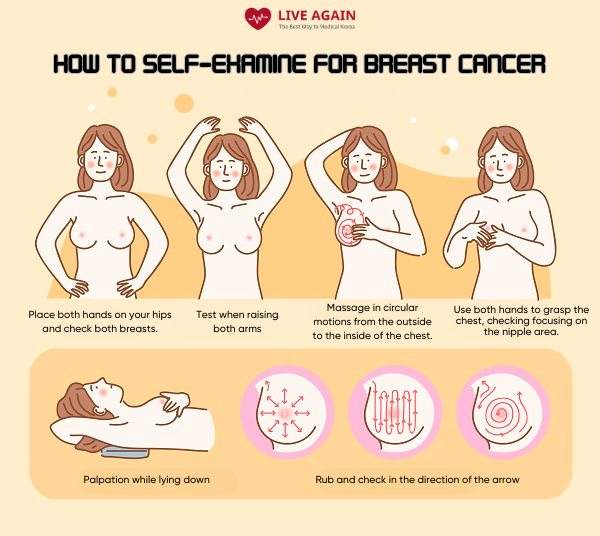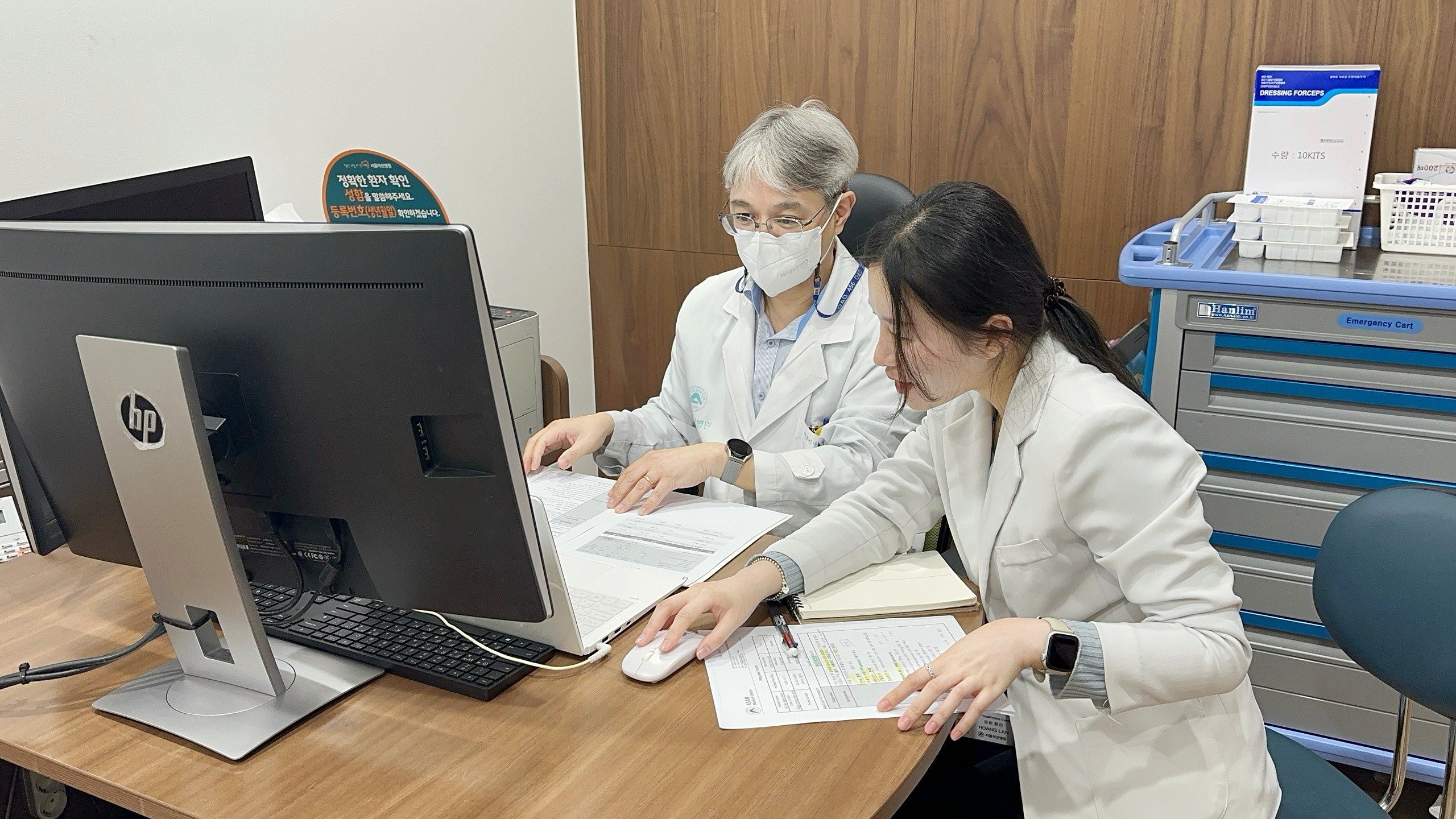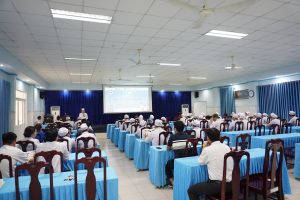According to the Globocan 2020 statistics, Vietnam is currently among the countries with the highest rates of breast cancer in the world. Each year, the country records about 21,555 new cases and 9,345 deaths from this disease. However, breast cancer can be effectively treated if detected early with a good prognosis. Researchers in Asia show that the 5-year survival rate ranges from 56.5% to 86.7%.
Not only in Vietnam but also globally, efforts to protect women’s health against breast cancer are being focused on. Every October, since its inception in the US in 1985, has been chosen by the United Nations as Breast Cancer Awareness Month worldwide. This is the time when campaigns to raise awareness, prevent and support breast cancer treatment are widely implemented, calling on the community to focus on screening and access to advanced treatment methods.

Get detailed information about breast cancer, one of the major concerns for women!
I. What is breast cancer?
Breast cancer is a general term for all malignant tumors that occur in the breast. Breast cancer is a dangerous disease in which abnormal tissue in the breast develops continuously or spread, or metastasize, to other parts of the body.There are different kinds of breast cancer. The kind of breast cancer depends on which cells in the breast turn into cancer.
II. Causes
It is challenging to pinpoint the exact cause of breast cancer. However, a Western lifestyle with a diet high in fat and calories leading to obesity, late marriage and low birth rates, not breastfeeding, early puberty and late menopause are thought to be contributing factors to breast cancer.
Risk factors for breast cancer include:
- Women over 40 years old
- Family history of breast cancer
- Early puberty before the age of 14
- Menopause after the age of 50
- Never having given birth to a full-term baby
- Having the first child after the age of 35
- Not breastfeeding
- Women weighing over 63 kg or having a body mass index (BMI) over 25
III. Symptoms
In the early stages, most breast cancers do not show symptoms. When breast cancer progresses to a certain extent, a lump may be felt in the breast. In severe cases, bloody discharge may appear from the nipple. In addition, when there is an eczema that does not heal on the nipple, breast cancer may also be suspected.
When breast cancer progresses very severely, the breast skin may become sunken, red and swollen, accompanied by a feeling of pain or heat. This condition is called inflammatory breast cancer. In these cases, the disease progresses very quickly and the prognosis is not good.
IV. Diagnosis
There are several methods to diagnose breast cancer:
- Self-examination at home
- Examination at a hospital, with regular breast cancer screenings recommended: X-ray imaging (mammography, breast CT scan, breast ultrasound), and breast biopsy (fine-needle aspiration using ultrasound).

V. Treatment Methods
1. Surgery
The most essential treatment for breast cancer patients is surgery. We perform surgical methods to remove cancer tissue depending on the condition of the tumor.
1-1. Total / Subtotal Mastectomy
This is a traditional surgical procedure that removes the entire breast, including the nipples, as well as breast cancer tissue, and at the same time the lymph nodes of the armpits.
The reason for removing the entire breast is that breast cancer is much more multiple than other cancers. The mastectomy is determined by the location, size and scope of cancer, and a monitoring lymph node biopsy is performed and if cancer cells are found, the removal of lymph nodes is performed together with lymph node resection.
The latest mastectomy is performed by leaving the areola and nipples behind, not the surgery that reveals the entire breast as in the past.
1-2. Breast conserving surgery (BCS)
It doesn’t remove the entire breast, but removes only some of the normal tissues, including breast cancer tissue, and the armpit lymph nodes with a new incision under the armpit. The large parts of the breast and the nipples remain, and when the postoperative wound heals, radiation is injected into the remaining breast five times a week, five minutes at a time, for about six to seven weeks, the microscopic areas of cancer that may be present in the breast, using radiation therapy to prevent the cancer from growing.
2. Radiation therapy
Breast conserving surgery (BCS), unlike total/subtoal mastectomy, is to remove only cancer tissue in the breast and armpit lymph nodes, and typically, because breast cancer has multiple properties, a lump of cancer has been removed, but elsewhere in the breast, there can be 20 to 30 percent of invisible cancer cells.
Therefore, radiation therapy can inhibit or kill the growth of microscopic cancer cells.
3. Chemotherapy
If the therapeutic effect of chemotherapy is expected to be greater than the possible side effects, the doctor recommends that the patient receive treatment, and if the side effects are expected to be greater than the treatment, he or she will not need chemotherapy.
Intravenous injection is the most common method of injecting the needle into the vein of the back of the hand or arm. Chemotherapy administration time varies depending on the type of anticancer medication. If it is expected to take a long time or very large side effects, hospitalization may be required, but in most cases, it does not require hospitalization and you can return home with a simple administration from an outpatient.
4. Anti-hormone therapy
Most breast cancer cells are thought to grow and multiply by estrogen, progesteron.
These breast cancer cells have estrogen receptors in the cytoplasm, which are known to combine with estrogen to grow cancer cells. 60-70 percent of breast cancer patients after menopause have these estrogen receptors in their cancer cells, and 40-50 percent in pre-menopausal patients. So we need to check for the presence of this receptor in every patient, and if there is a receptor, we can combine the receptor with another substance (tamoxifen) instead of estrogen to inhibit the growth of cancer cells.
Tamoxifen, one of the anti-hormonal drugs, is a representative medicatio and its product name is Nolvadex. Nolvadex is known to bind to estrogen receptors and inhibit growth by preventing cancer cells from receiving estrogen.
5. Targeted therapy(molecularly targeted therapy)
Various growth factors and other substances are involved in the growth and division of normal cells or cancer cells. Her-2 genes exist normally in our body cells, and they control cell division. In some patients, when breast cancer occurs, the function of this gene is activated (Her2) and the division of cancer cells becomes faster. Targeted therapy is to selectively block only Her-2’s cellular pathway associated with breast cancer cell proliferation unlike conventional anticancer drugs, these drugs have little vomiting, hair loss, and blood loss. In breast cancer, *Herceptin and Rapatinib for Her-2/neu over-expression are the most representative targeted treatments.
* Herceptin: Just like testing the presence of a hormone receptor to determine the implementation of assistive hormone therapy in breast cancer surgery, cancer tissue is testing a new target called Her-2/neu. Her-2 protein is over-expressed in 20-25% of breast cancer patients. Her-2 over-expressed breast cancer is faster and more aggressive than breast cancer that does not, and has a poor prognosis because it is less responsive to tamoxifen or certain chemotherapy. In this way, a targeted treatment called Herceptin, which inhibits Her-2/neu function only by targeting Her-2/neu proteins in breast cancer, has been developed to slow or block cancer cell division. Herceptin can be administered
VI. Notes
① Side effects of surgery
After surgery, breast cancer patients may experience some side effects, but serious side effects that are life-threatening are rare. Postoperative complications may include fluid accumulation in the armpit (seroma), abnormal sensation due to damage to the sensory nerves, and lymphedema. Lymphedema is a condition in which the arm on the surgical side becomes swollen due to the removal of lymph nodes, resulting in lymph fluid not being able to drain normally and accumulating in the arm. Recently, for patients without signs of lymph node metastasis, lymph node biopsy is performed to minimize the removal of lymph nodes. However, if there is lymph node metastasis, lymph node dissection surgery must still be performed for treatment. Management of postoperative lymphedema is very important.
② Side effects of radiotherapy
The most common complications of radiotherapy for breast cancer are skin irritation, swelling in the breast, and sunburn-like effects. Skin reactions usually disappear after 6-12 months. In addition, radiotherapy can also cause lymphedema, which usually appears after 3-4 weeks of treatment.
③ Side effects of chemotherapy
All types of chemotherapy have side effects. Common side effects include nausea, vomiting, general weakness, hair loss, low white blood cell count, and early menopause. However, these side effects are usually temporary and the severity varies from patient to patient. Although these side effects can be difficult for patients, there are now many anti-nausea drugs that can help reduce the burden on patients. In addition, the use of wigs has also developed, which helps to better conceal hair loss.
④ Side effects of hormone therapy
When using anti-hormone drugs such as tamoxifen, some side effects may occur such as menopausal symptoms (facial flushing), venous thrombosis, and increased risk of endometrial cancer. However, tamoxifen is known to reduce the risk of breast cancer in the opposite breast by about 50%. It should be noted that the benefits of tamoxifen in preventing cancer recurrence are much greater than these side effects.
Recently, aromatase inhibitors used for postmenopausal patients can cause osteoporosis and joint pain. This drug inhibits the production of the small amount of female hormones remaining after menopause, which can make osteoporosis worse, even in women with normal menopause. Therefore, when using aromatase inhibitors, regular osteoporosis screening and calcium supplementation are required. In addition, vaccination to prevent osteoporosis is also recommended.
#AsanMedicalCenter #breastcancer #Screeing #breastcancerawareness








